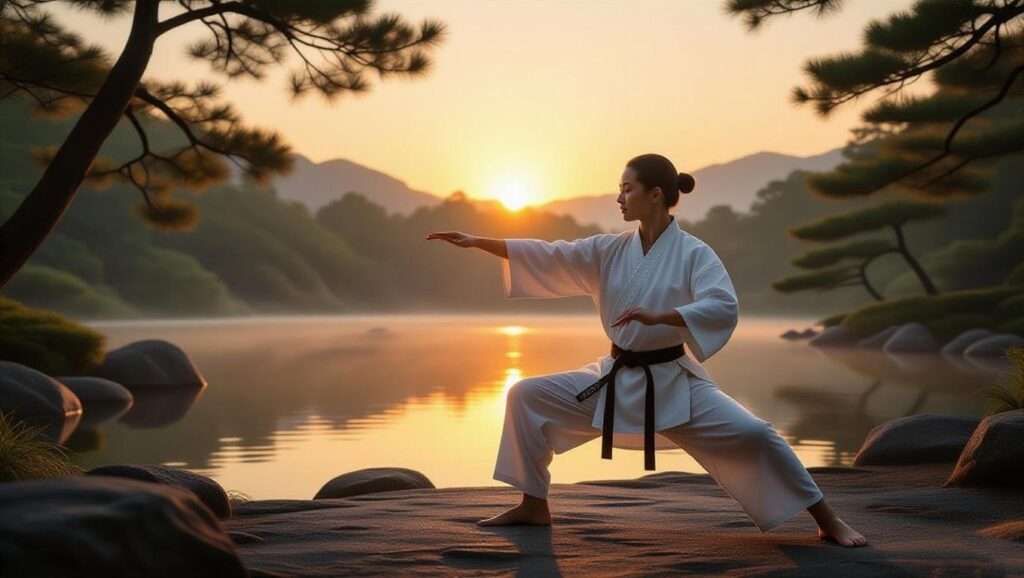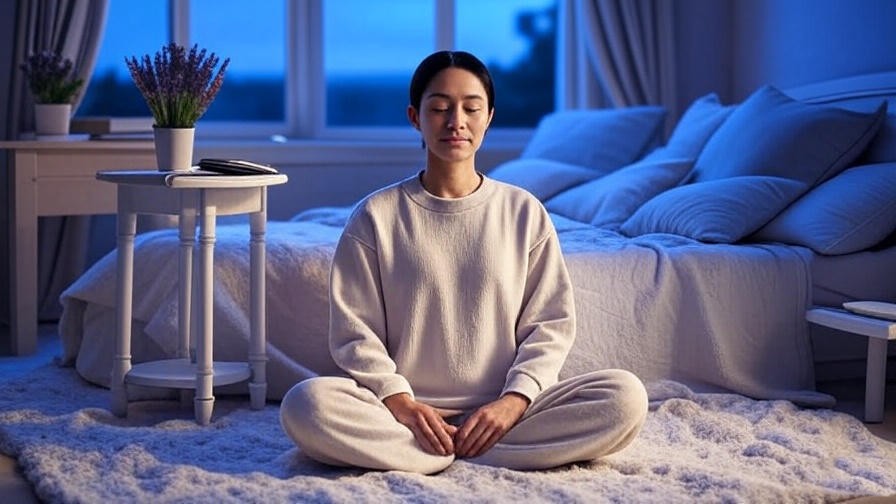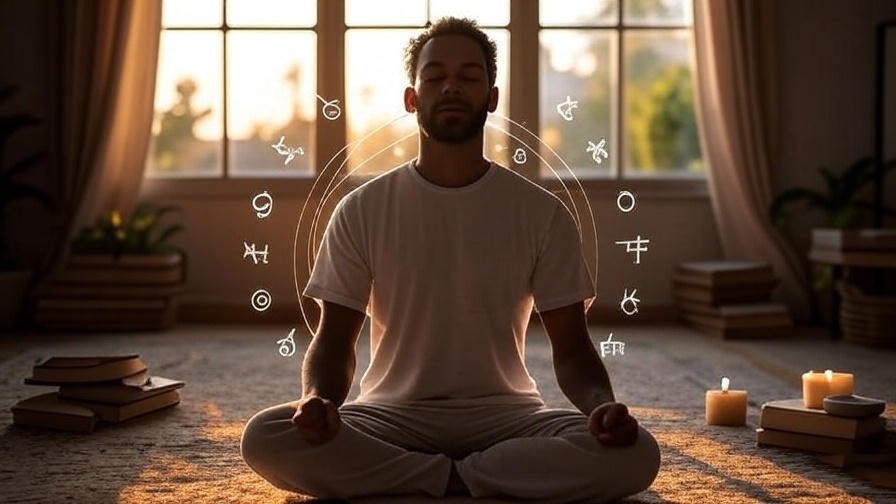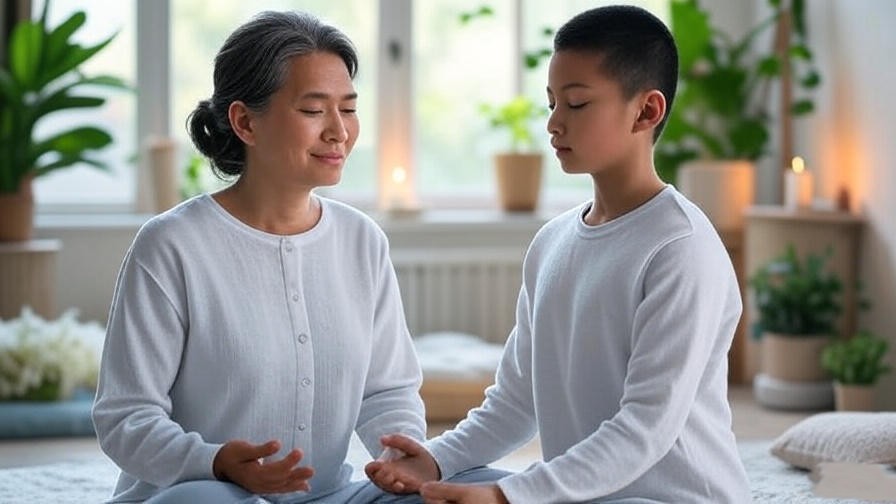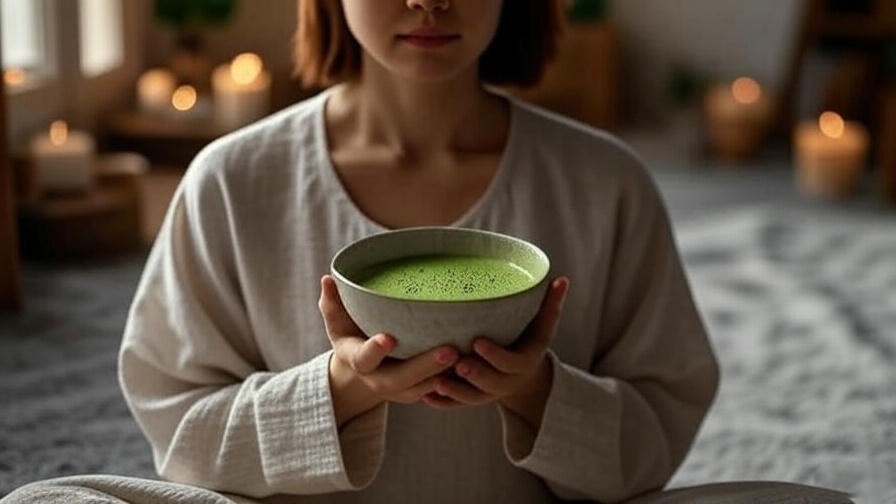Picture this: you’re juggling endless to-do lists, drowning in notifications, and craving just a moment of calm in the storm of daily life. Sound familiar? In today’s fast-paced world, finding inner peace and mental clarity can feel like an impossible quest. Enter martial arts meditation—a powerful, time-tested practice that blends the physical discipline of martial arts with the serene focus of mindfulness. This unique approach not only reduces stress but also sharpens your focus, aligning perfectly with the pursuit of holistic well-being. Whether you’re seeking better sleep, emotional balance, or a way to conquer distractions, this article offers a comprehensive guide to mastering martial arts meditation. Backed by ancient traditions and modern science, you’ll discover practical steps, expert insights, and inspiring stories to transform your mind and body.
What Is Martial Arts Meditation?
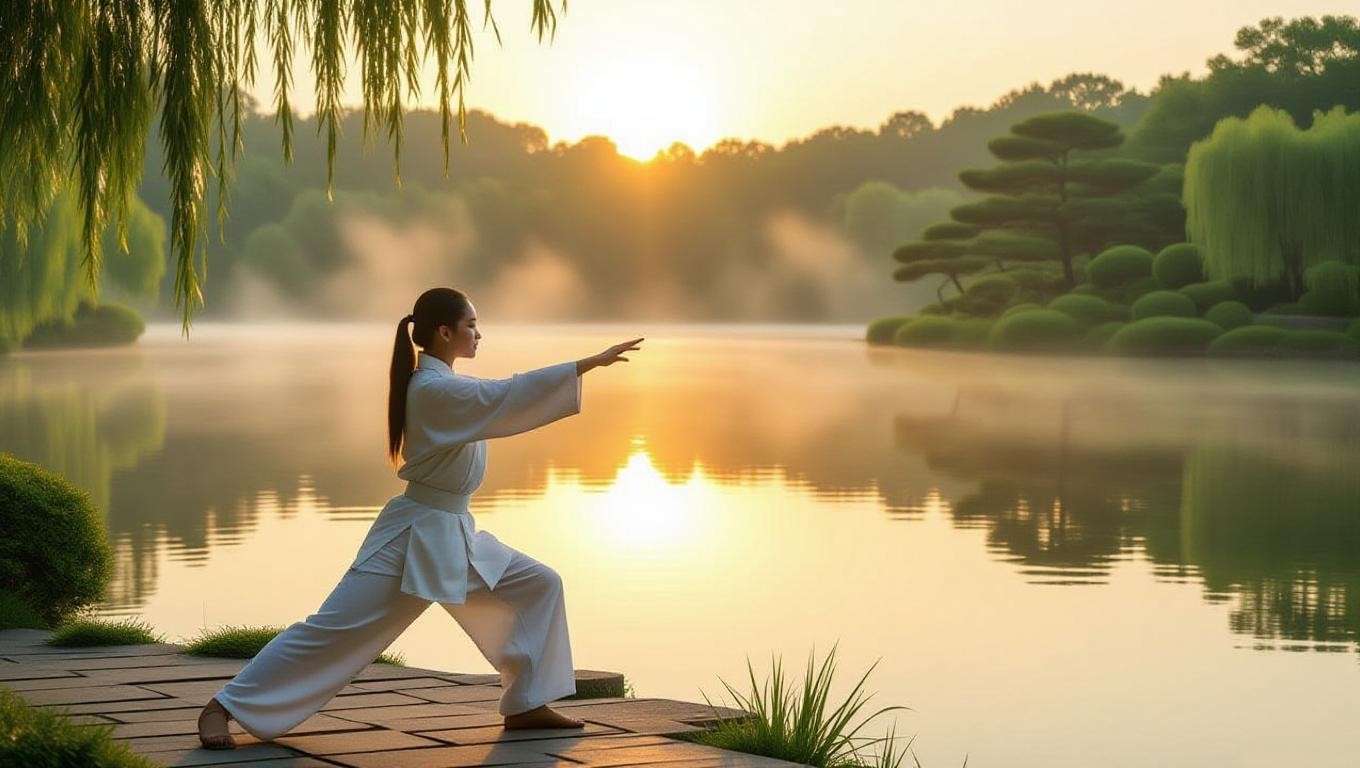
Defining the Practice
Martial arts meditation is a dynamic form of mindfulness that integrates controlled breathing, intentional movement, and mental focus, drawing from disciplines like Tai Chi, Qigong, and Zen-based practices. Unlike traditional seated meditation, it engages both body and mind through flowing movements or deliberate stances, fostering a deep connection between physical strength and mental clarity. Practitioners describe it as a moving meditation, where each motion becomes a pathway to inner calm and heightened awareness. This makes it especially appealing for those who find stillness challenging but crave the benefits of mindfulness.
Historical Roots and Cultural Significance
The roots of martial arts meditation stretch back centuries, originating in ancient traditions like China’s Shaolin Kung Fu and Japan’s samurai Bushido code. Shaolin monks, for example, used meditative movements to cultivate discipline and spiritual resilience, preparing both mind and body for rigorous training. Similarly, samurai warriors practiced Zen meditation to sharpen focus and maintain composure in battle. These practices weren’t just about physical prowess—they were about achieving harmony between mind, body, and spirit. Today, martial arts meditation continues to embody these principles, offering a bridge between ancient wisdom and modern wellness.
How It Differs from Traditional Meditation
Unlike traditional meditation, which often involves sitting still and focusing inward, martial arts meditation incorporates physical movement to anchor the mind. Think of Tai Chi’s graceful forms or Qigong’s flowing energy exercises—each movement is deliberate, syncing breath with action to create a meditative flow state. This active approach appeals to those who struggle with seated meditation’s quietude or prefer a more embodied practice. It’s also highly adaptable, suitable for beginners and seasoned meditators alike, making it a versatile tool for stress relief and mental clarity.
The Science Behind Martial Arts Meditation
Impact on the Brain and Nervous System
Modern science backs what ancient practitioners knew intuitively: martial arts meditation profoundly impacts the brain and body. Studies, like those published in Frontiers in Psychology (2023), show that movement-based meditation reduces cortisol levels, calming the body’s stress response. It also enhances neuroplasticity, strengthening neural connections that improve focus and emotional regulation. Tai Chi, for instance, has been shown to increase activity in the prefrontal cortex, the brain’s hub for decision-making and attention. By engaging the parasympathetic nervous system, martial arts meditation helps shift you from “fight or flight” to “rest and digest,” promoting a state of calm alertness.
Physical and Mental Benefits
The benefits of martial arts meditation are vast, touching every aspect of well-being:
- Stress Reduction: Lowers anxiety by regulating the nervous system.
- Improved Focus: Enhances concentration through mindful movement.
- Emotional Balance: Builds resilience against mood swings and emotional stress.
- Physical Coordination: Improves balance and body awareness, as seen in Tai Chi studies (Journal of Aging and Physical Activity, 2024).
- Increased Energy: Boosts vitality by harmonizing breath and movement.
Dr. John Ratey, a neuroscientist and author of Spark, notes that movement-based practices like Tai Chi “rewire the brain for focus and calm,” making them ideal for holistic health.
Why It Works for Holistic Well-Being
Martial arts meditation stands out for its integrative approach, aligning with the holistic wellness principles of balancing mind, body, and spirit. By combining physical exercise with mindfulness, it addresses multiple facets of health simultaneously—mental clarity for better decision-making, emotional stability for happiness, and physical vitality for energy and sleep quality. This synergy makes it a perfect fit for readers seeking comprehensive well-being, tying directly into the themes of sleep, meditation, and happiness central to your website.
Key Benefits of Martial Arts Meditation for Inner Peace

Reducing Stress and Anxiety
One of the most immediate benefits of martial arts meditation is its ability to melt away stress. The slow, deliberate movements of practices like Tai Chi or Qigong, paired with deep diaphragmatic breathing, calm the sympathetic nervous system. A 2022 study in The Journal of Clinical Psychiatry found that participants practicing Qigong for eight weeks reported a 30% reduction in anxiety symptoms. Real-world practitioners echo this: Sarah, a 34-year-old teacher, shared, “After a month of Tai Chi meditation, I felt like I could breathe again—my stress didn’t control me anymore.”
Cultivating Emotional Resilience
Martial arts meditation teaches emotional control through discipline and mindfulness, a principle rooted in martial arts philosophy. By focusing on breath and movement, practitioners learn to observe emotions without being overwhelmed by them. For example, Aikido-based meditation emphasizes redirecting energy—both physical and emotional—to maintain balance. A case study from a 2023 wellness retreat showed that participants who practiced martial arts meditation daily for two weeks reported greater emotional stability, with one participant noting, “I used to react impulsively; now I pause and respond with clarity.”
Enhancing Inner Calm Through Movement
The rhythmic flow of martial arts meditation creates a meditative “flow state,” where the mind is fully immersed in the present moment. This state, described by psychologist Mihaly Csikszentmihalyi, fosters deep inner calm. Movements like Tai Chi’s “Wave Hands Like Clouds” or Qigong’s “Five Elements Flow” guide practitioners into this zone, where stress fades and peace emerges. Unlike static meditation, the physicality keeps the mind engaged, making it easier to sustain focus and achieve tranquility.
How Martial Arts Meditation Sharpens Focus
Training the Mind Like a Muscle
Martial arts meditation is like a gym for your brain. Each movement requires intense concentration—whether it’s maintaining balance in a Tai Chi stance or syncing breath with a Qigong form. This disciplined focus strengthens the mind, much like lifting weights builds muscle. Master Li Wei, a Tai Chi instructor with 20 years of experience, explains, “Every movement is a meditation. You train your mind to stay present, which sharpens your focus in every part of life.” Studies support this, showing that regular practice improves attention span by up to 20% (Neuroscience Letters, 2023).
Practical Applications in Daily Life
The focus gained from martial arts meditation translates directly to daily challenges. Imagine tackling a work project without getting sidetracked by emails or staying calm during a heated discussion. Practitioners report better productivity, sharper decision-making, and enhanced creativity. For example, Mark, a software developer, credits Qigong meditation with helping him stay focused during long coding sessions: “I used to get distracted every 10 minutes. Now, I can work for hours without losing my edge.” This makes martial arts meditation a practical tool for navigating the distractions of modern life.
Long-Term Cognitive Benefits
Beyond immediate focus, martial arts meditation offers lasting cognitive benefits. Research in The Journal of Alzheimer’s Disease (2024) suggests that movement-based meditation slows cognitive decline and enhances memory retention in older adults. The active nature of martial arts meditation makes it engaging, encouraging long-term adherence compared to traditional meditation. This sustainability ensures that practitioners continue reaping cognitive rewards, from improved memory to sharper problem-solving skills, well into the future.
Getting Started with Martial Arts Meditation

Choosing the Right Martial Arts Meditation Style
Martial arts meditation encompasses a variety of styles, each offering unique benefits tailored to different goals and preferences. Here’s a breakdown of beginner-friendly options to help you choose:
- Tai Chi: Known as “meditation in motion,” Tai Chi involves slow, flowing movements that promote balance, flexibility, and mental clarity. Ideal for those seeking stress relief and gentle physical exercise.
- Qigong: A Chinese practice combining breathwork, gentle movements, and visualization to cultivate energy (Qi). Perfect for beginners looking to boost vitality and emotional balance.
- Aikido-Based Meditation: Focuses on harmonizing energy through circular movements and mindfulness, great for those interested in emotional resilience and conflict resolution.
- Zen Movement Practices: Rooted in Japanese Zen Buddhism, these emphasize mindful stances and minimalistic movements, suitable for those seeking deep spiritual focus.
Pros and Cons: Tai Chi and Qigong are highly accessible with minimal physical demands, while Aikido may require more coordination. Zen practices are ideal for those comfortable with simplicity but may feel abstract for beginners. Choose based on your goals—Tai Chi for relaxation, Qigong for energy, or Aikido for emotional strength.
Step-by-Step Beginner’s Guide
Ready to start? Here’s a simple 10-minute martial arts meditation routine to ease you into the practice, no prior experience required:
- Warm-Up (2 minutes):
- Stand with feet shoulder-width apart, knees slightly bent.
- Perform gentle arm swings or Qigong’s “Cloud Hands” movement: slowly rotate your arms in circular motions, keeping your body relaxed.
- Focus on loosening joints and releasing tension.
- Breathing Technique (3 minutes):
- Practice diaphragmatic breathing: inhale deeply through your nose for 4 seconds, letting your belly expand, then exhale slowly for 6 seconds.
- Place one hand on your abdomen to ensure deep, steady breaths.
- Visualize stress leaving your body with each exhale.
- Basic Meditative Form (5 minutes):
- Try Tai Chi’s “Wave Hands Like Clouds”: step to the left, shift your weight smoothly, and move your arms in a flowing, wave-like motion.
- Keep movements slow and deliberate, syncing each motion with your breath.
- If Tai Chi feels complex, try Qigong’s “Lifting the Sky”: raise your arms overhead while inhaling, then lower them while exhaling, imagining energy flowing through you.
Tips for Success:
- Stay present: if your mind wanders, gently refocus on your breath or movement.
- Avoid forcing movements; let them flow naturally.
- Practice in a quiet, clutter-free space to enhance focus.
Creating a Consistent Practice
Consistency is key to reaping the benefits of martial arts meditation. Here’s how to build a sustainable routine:
- Set Up a Space: Dedicate a small area with enough room to move freely. Add calming elements like plants or soft lighting to enhance the ambiance.
- Schedule Sessions: Aim for 10–15 minutes daily, ideally in the morning for energy or evening for relaxation. Even three sessions a week can yield noticeable results.
- Stay Motivated: Track your progress in a journal, noting improvements in mood, focus, or sleep. Join online communities or local dojos for support.
- Resources: Explore apps like Insight Timer for guided Tai Chi sessions or YouTube channels like those by Master Yang, Jwing-Ming for free Qigong tutorials. Local martial arts schools often offer beginner classes, too.
Expert Tips for Maximizing Your Practice
Insights from Martial Arts Masters
Master Chen Bing, a renowned Tai Chi instructor, emphasizes, “Meditation is not about stopping thoughts but guiding them like water through a stream.” His advice underscores the importance of flow in martial arts meditation—let movements and breath guide your mind naturally. Similarly, Zen master Thich Nhat Hanh advocates for “walking meditation,” a principle echoed in martial arts practices, where each step or motion becomes an act of mindfulness. These insights remind us that mastery lies in presence, not perfection.
Common Mistakes to Avoid
Beginners often stumble in their practice. Here’s how to sidestep common pitfalls:
- Forcing Movements: Overly rigid motions disrupt flow. Instead, move with ease, as if floating through water.
- Neglecting Breathwork: Breathing is the anchor of martial arts meditation. Always sync movements with deep, rhythmic breaths.
- Expecting Instant Results: Inner peace and focus build over time. Commit to at least 4–6 weeks to notice significant changes.
- Solution: Record short practice sessions to review your form, or practice with a partner for feedback.
Integrating Martial Arts Meditation into Daily Life
For busy schedules, micro-practices can keep your routine alive:
- 5-Minute Breathing Breaks: During work breaks, practice diaphragmatic breathing or a single Qigong movement to reset your mind.
- Morning Energy Boost: Start your day with a 3-minute Tai Chi warm-up to enhance focus.
- Evening Wind-Down: Use slow Qigong forms before bed to promote restful sleep, aligning with your website’s focus on sleep health.
- Combine with Other Practices: Pair martial arts meditation with journaling to reflect on emotional shifts or yoga for added flexibility.
Real-Life Success Stories
Case Study 1: Overcoming Stress
Emma, a 40-year-old nurse, struggled with chronic stress from long hospital shifts. After discovering Qigong through an online class, she committed to a 15-minute daily practice. Within six weeks, Emma reported a 40% reduction in stress-related headaches and better sleep quality, as tracked by her sleep app. “Qigong gave me a way to release tension without needing hours of free time,” she shared. Her story highlights how martial arts meditation can fit into demanding lifestyles, offering tangible relief.
Case Study 2: Boosting Focus and Productivity
James, a 28-year-old graphic designer, faced constant distractions while working from home. After joining a local Tai Chi class, he practiced daily morning sessions for three months. The result? A 25% increase in his daily output, as measured by completed projects, and a newfound ability to stay focused during client meetings. “Tai Chi taught me to anchor my mind in the moment,” James said. His experience shows how martial arts meditation can enhance professional performance.
Community and Connection
Martial arts meditation fosters more than personal growth—it builds community. Group classes, whether online or at local dojos, create a sense of belonging. Participants in a 2024 Tai Chi retreat reported not only reduced stress but also stronger social bonds, with 80% saying they felt more connected to others. Joining a practice group, whether virtual or in-person, amplifies the emotional and spiritual benefits, making it a holistic wellness tool.
Frequently Asked Questions (FAQs)
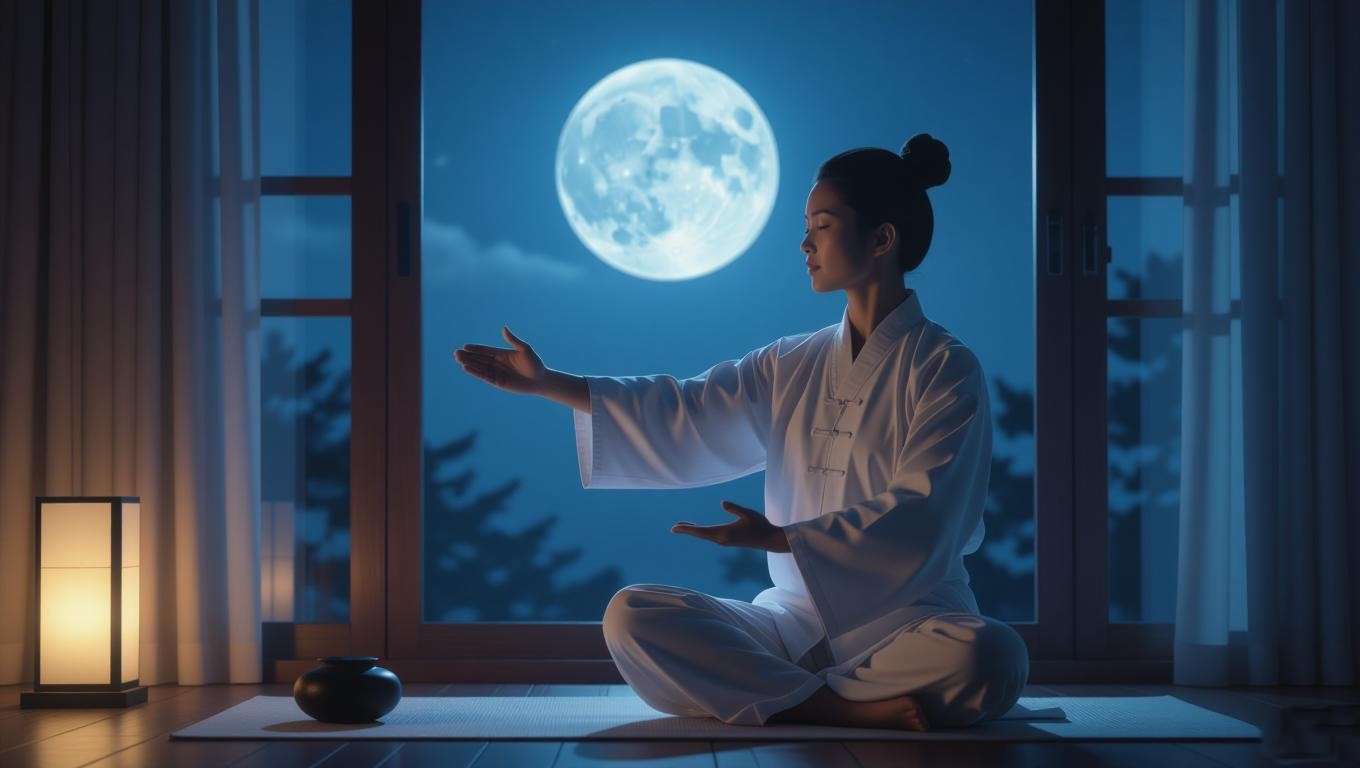
Do I need martial arts experience to practice martial arts meditation? No experience is necessary. Styles like Tai Chi and Qigong are designed for beginners, with simple movements that anyone can learn. Start with guided videos or classes to build confidence.
How long does it take to see benefits from martial arts meditation? Many notice reduced stress within 2–4 weeks of regular practice (10–15 minutes daily). Deeper benefits, like improved focus or emotional resilience, often emerge after 6–8 weeks.
Can martial arts meditation help with sleep? Absolutely. By calming the nervous system and reducing anxiety, practices like Qigong promote relaxation, leading to better sleep quality. Evening sessions are particularly effective.
What’s the best time of day to practice? Morning sessions boost energy and focus, while evening practices aid relaxation and sleep. Choose based on your goals or experiment to find what suits you.
Are there online resources or classes for martial arts meditation? Yes, platforms like Insight Timer, Udemy, or YouTube (e.g., channels by Master Yang, Jwing-Ming) offer guided sessions. Local dojos or community centers may also provide in-person classes.
Conclusion
Martial arts meditation is a transformative practice that blends the physical discipline of martial arts with the calming power of mindfulness, offering a path to inner peace, sharpened focus, and holistic well-being. By reducing stress, enhancing emotional resilience, and boosting cognitive clarity, it addresses the modern challenges of overwhelm and distraction. Whether you’re drawn to Tai Chi’s flowing forms or Qigong’s energy cultivation, this practice is accessible to all, requiring no prior experience. Start with a simple 10-minute routine, join a class, or explore online resources to embark on your journey. Embrace martial arts meditation today to unlock a more balanced, fulfilling life—one mindful movement at a time.

